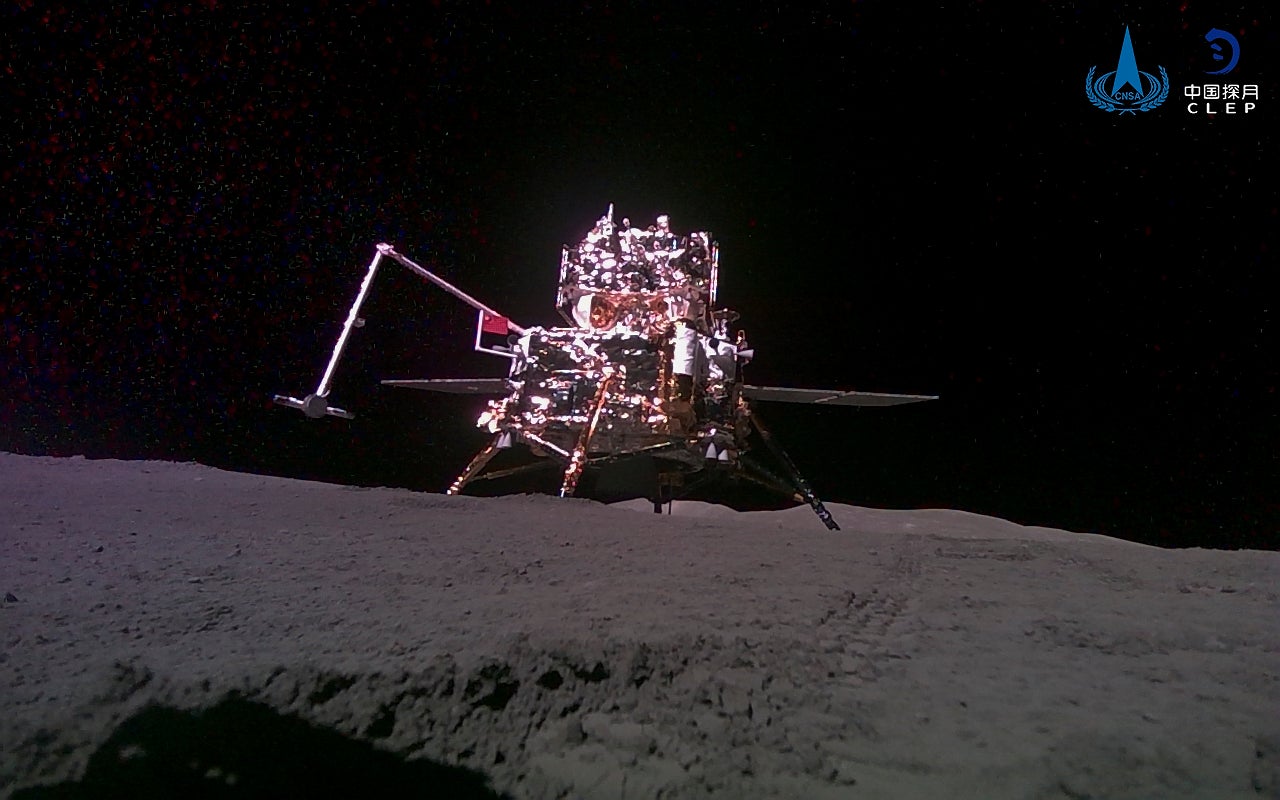
For decades, scientists have been puzzled by the geological makeup of the far side of the moon, the mysterious hemisphere that faces away from Earth. But now, a breakthrough has shed light on this unexplored region.
US and Chinese researchers have discovered that supervolcanoes erupted billions of years ago on the far side, similar to those on the near side, creating massive craters in the moon’s surface.
The groundbreaking findings came from 2kg of lunar rocks and soil collected by China’s Chang’e-6 mission—the first spacecraft in history to successfully land and launch from the far side, an area whose geology differs dramatically from the hemisphere visible from Earth.
Two independent teams of scientists identified volcanic rock fragments that are approximately 2.8 billion years old. One fragment, however, is even older, dating back to about 4.2 billion years.
This discovery provides further evidence that the Moon’s volcanic activity was not limited to the side we see from Earth. Researchers already knew that volcanoes were active on the near side of the Moon during a similar period, but these new findings expand our understanding of lunar geology.
The results were published Friday in the journals Nature and Science.

“This is an incredibly exciting study”, Professor Qiuli Li from the Institute of Geology and Geophysics wrote in a detailed peer review.
“It is the first geochronology study to come from the Chang’e-6 samples, and will be of immense importance to the lunar and planetary science community.”
“To obtain a sample from this area is really important because it’s an area that otherwise we have no data for,” said Christopher Hamilton, a planetary volcano expert at the University of Arizona.
Previous studies, including data from NASA’s Lunar Reconnaissance Orbiter, suggested the far side might also have a volcanic past. The first samples from that region facing away from Earth confirm an active history.
China has launched several spacecraft to the moon. In 2020, the Chang’e-5 spacecraft returned moon rocks from the near side, the first since those collected by NASA’s Apollo astronauts and Soviet Union spacecraft in the 1970s. The Chang’e-4 spacecraft became the first to visit the moon’s far side in 2019.
The moon’s far side is pockmarked by craters and has fewer of the near side’s flat, dark plains carved by lava flows. Why the two halves are so different remains a mystery, said study co-author Li from the Chinese Academy of Sciences.
Li said the new findings reveal over 1 billion years of volcanic eruptions on the lunar far side. Future research will determine how the activity lasted so long.







